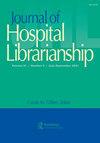罕见病日:图书馆员的机会
Q3 Social Sciences
引用次数: 0
摘要
超过7000种疾病在美国被认为是罕见的,影响着全国3000万人(1,2)。受罕见病影响的患者不仅要应对随之而来的疾病挑战,而且由于患有罕见病,还面临许多额外的障碍。每年2月29日是一年中最罕见的一天,这是一个罕见病日,旨在提高人们对罕见病的认识,并为受罕见病影响的人提供支持。(在非闰年,罕见病日在2月28日举行)。罕见病日为图书馆员提供了一个机会,为这个患者社区提供资源和节目。本文讨论了图书馆员为支持罕见病患者而开发的资源和程序,并重点介绍了在一家消费者健康图书馆为纪念罕见病日而进行的一些罕见病程序。罕见病有时被称为孤儿病。罕见病有多种定义,但根据《孤儿药法》,在美国,如果影响人数少于20000人,则视为罕见病(2)。在欧盟,当一种疾病影响到不到2000人中的一人时,它被认为是罕见的(3)。有6000到8000种疾病被认为是罕见的。虽然只有少数人受到任何一种罕见病的影响,但罕见病在美国影响了3000万人,在全球影响了3亿人(2)。大约70%至80%的罕见病具有特定的遗传成分(2),而其他罕见病可能由感染、过敏或环境原因引起。一种罕见的疾病通常会贯穿一个人的一生,即使症状不会立即出现。近66%受罕见病影响的患者是儿科患者,这不仅对患者产生负面影响,也对父母/家庭产生影响。随后,父母承担起医疗照顾者的角色(3)。罕见病患者在医疗保健过程中面临许多挑战。提供者对许多罕见疾病缺乏了解。这些病人经常被误诊或者经常得不到诊断。一名罕见病患者平均需要6-8年的时间才能得到正确诊断,而且这些患者经常要接受多次不必要的医学检查(4)。由于本文章由计算机程序翻译,如有差异,请以英文原文为准。
Rare Disease Day: Opportunities for Librarians
Over 7,000 diseases are considered rare in the United States, affecting 30 million people nationally (1,2). Patients affected by rare diseases not only deal with the attendant challenges of illness but also face many additional barriers due to having a condition that is rare. Rare Disease Day, observed every February 29 , the rarest day of the year, is a way to raise awareness of rare diseases and provide support for those affected by rare diseases. (In non-leap years, Rare Disease Day is held on February 28). Rare Disease Day provides an opportunity for librarians to provide resources and programming in support of this patient community. This article discusses resources and programming that librarians can develop in support of patients with rare diseases and highlights some rare disease programming conducted at one consumer health library in observance of Rare Disease Day. Rare diseases are sometimes referred to as orphan diseases. There are multiple definitions of rare diseases but according to the Orphan Drug Act, in the United States a disease is considered rare if it affects fewer than 20,000 people (2). In the European Union, a disease is considered rare when it affects fewer than one out of 2000 people (3). There are between 6000 and 8000 diseases that are considered rare. While only a few people are affected by any one rare disease, collectively rare diseases affect 30 million people in the United States and 300 million people worldwide (2). Approximately 70% to 80% of rare diseases have an identified genetic component (2), while other rare diseases may result from infections, allergies, or environmental causes. A rare disease is often present throughout a person’s entire life, even if symptoms do not immediately appear. Nearly 66% of patients impacted by rare diseases are pediatric patients, which not only negatively affects the patient but also impacts parents/families. Subsequently, parents take on the role of medical caregivers (3). Patients with rare diseases face many challenges during their healthcare journey. There is a lack of provider knowledge of many rare diseases. These patients are often misdiagnosed or often go undiagnosed. On average, it takes over 6–8 years for a patient with a rare disease to be diagnosed correctly, and often these patients are subjected to multiple medical tests often unnecessarily (4). Due to the limited
求助全文
通过发布文献求助,成功后即可免费获取论文全文。
去求助
来源期刊

Journal of Hospital Librarianship
Social Sciences-Library and Information Sciences
CiteScore
1.00
自引率
0.00%
发文量
43
期刊介绍:
The Journal of Hospital Librarianship is the first journal to specifically address the issues and concerns of librarians and information specialists in the field of hospital librarianship. This peer-reviewed journal focuses on technical and administrative issues that most concern hospital librarians, providing a forum for those professionals who organize and disseminate health information to both clinical care professionals and consumers. The Journal addresses a wide variety of subjects that are vital to the field, including administrative, technical and program issues that may challenge hospital librarians. Articles published in the Journal focus on research strategies, administrative assistance, managed care, financing, mergers, and more.
 求助内容:
求助内容: 应助结果提醒方式:
应助结果提醒方式:


